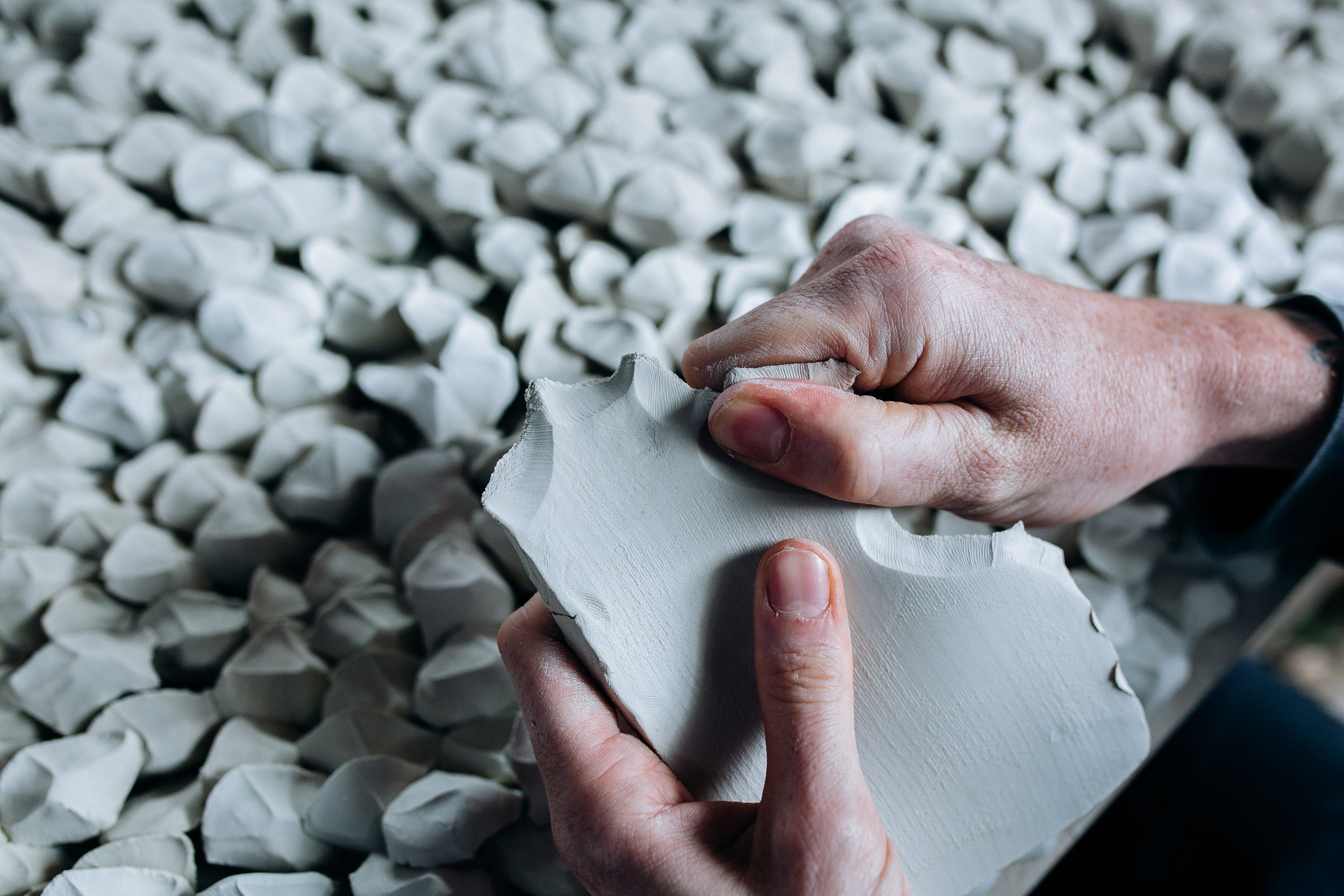DEATHGATE, 2015-18.
Pinched clay, variable large-scale dimensions, 2015-2018.
The following slideshow contains photographs of Deathgate installed for its inaugural exhibition at The Goods Shed, Toowoomba. Install dimensions: L 100 x W 2.2 x D 0.1 metres.
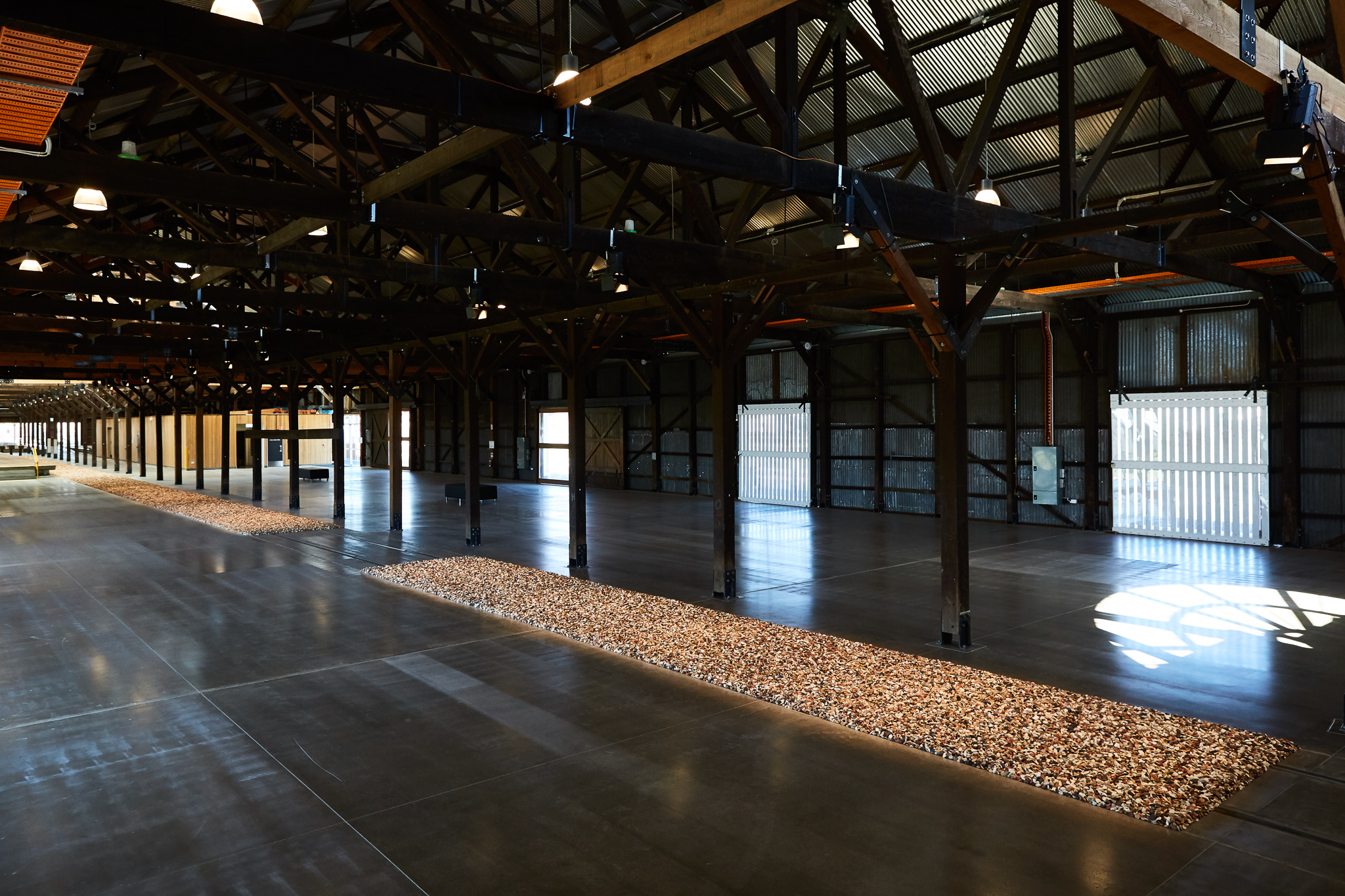
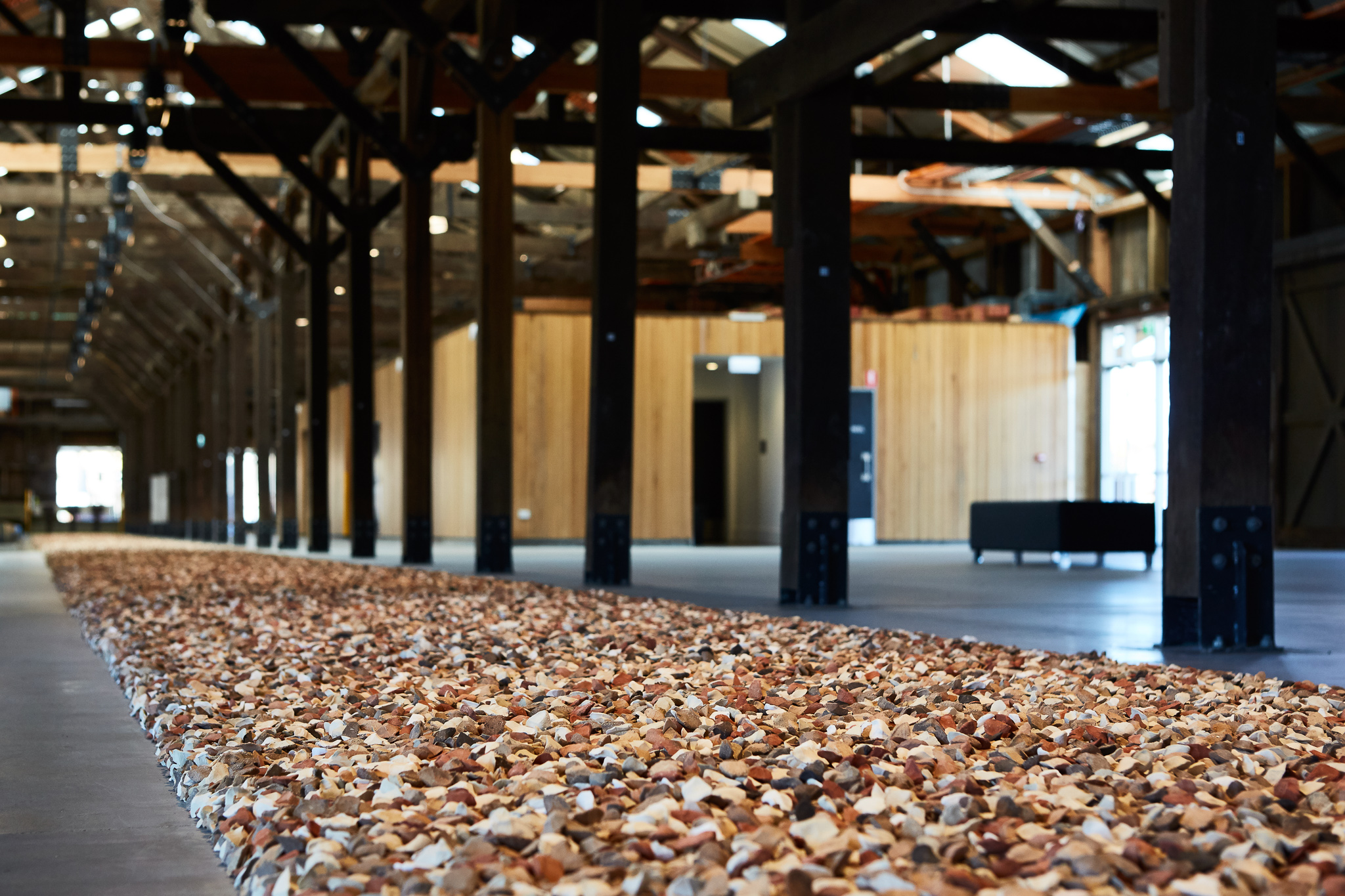

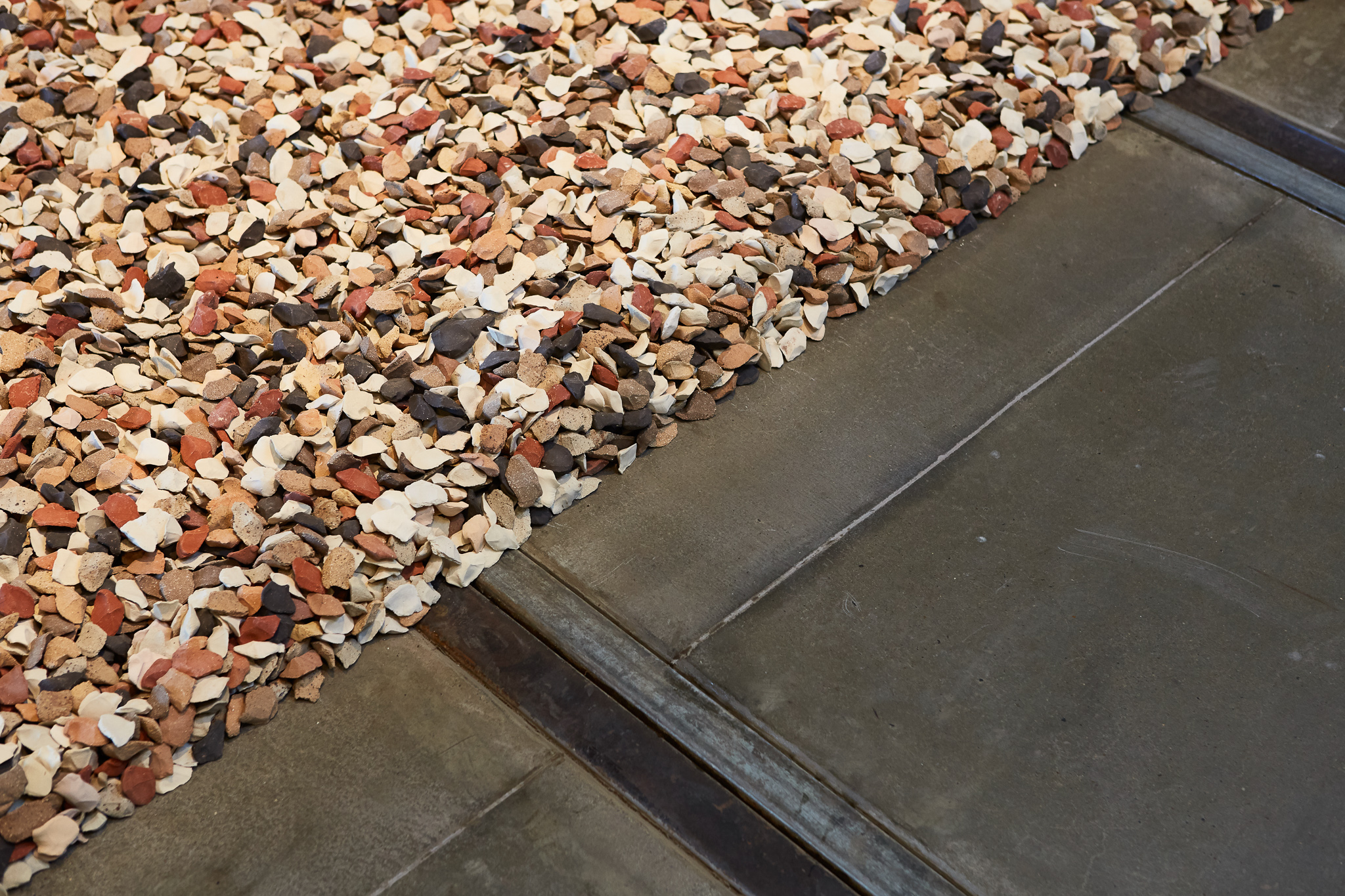
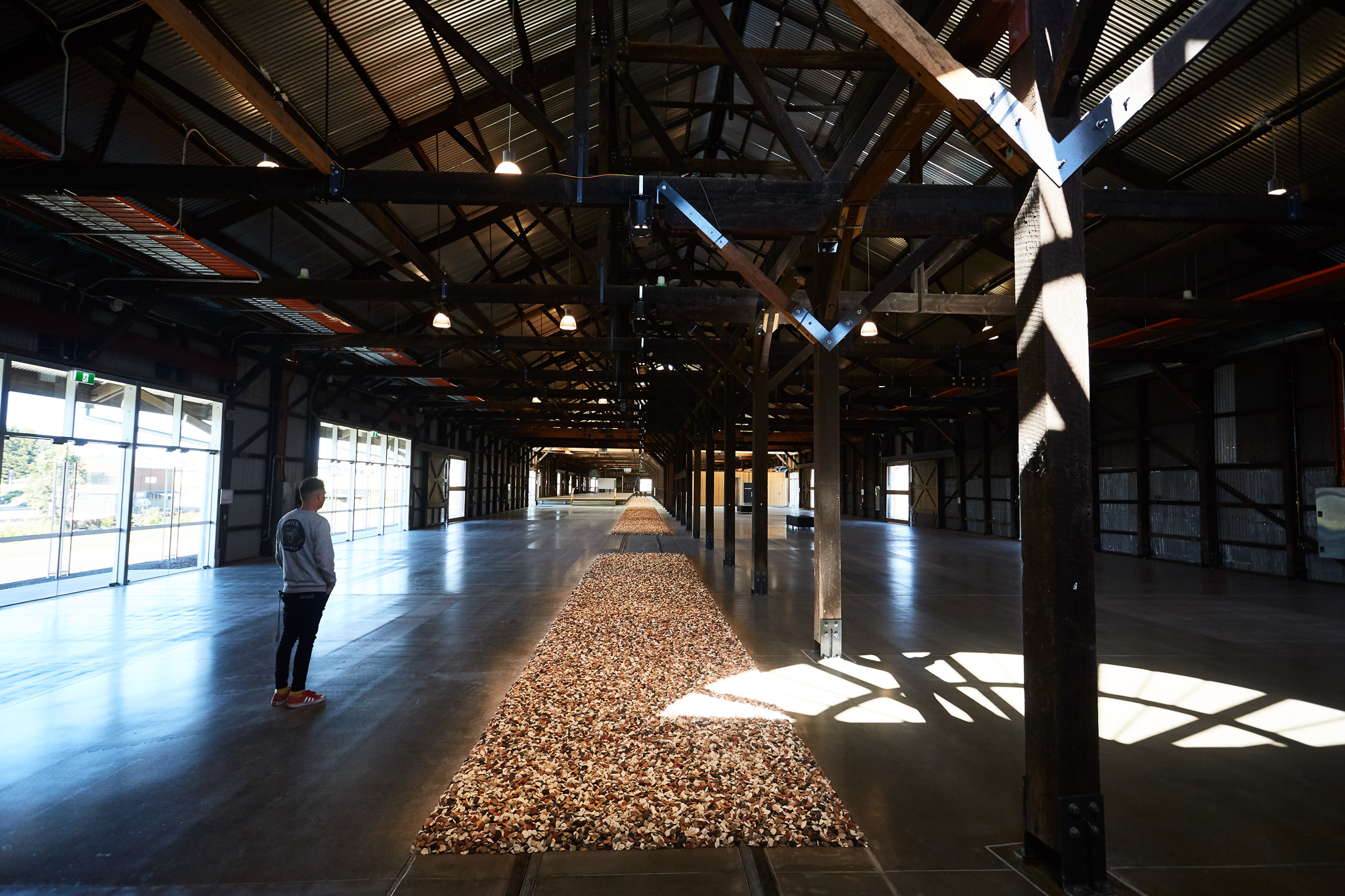
Photography: James Green.
Deathgate is a ceramic installation artwork comprising 1.3 million handmade pieces, each representing one person detained in the Auschwitz network of concentration camps.
Principally, the time and labour involved in producing this work is where its conceptual basis lies. The objects have been created in comparative reference to the stones that cover and surround the railway, which was used as the main mode of prisoner transportation into the Auschwitz II (Birkenau) extermination camp. Utilising a wide range of clay types and a process completely reliant on the hands of the artist; I have produced each ceramic ‘stone’ to feature a fingerprint: an index of human interaction. This is intended as both a reductive exercise in considering the treatment of those victimised, but also as a way to create retrospective evidence. This evidence demonstrates that beyond the surface of largely incomprehensible statistics, is the reality of lived and felt human history.
Top and bottom: The pinching process behind creating the ceramic 'stones' (photographs: Hannah Roche).
The work is presented as two separate beds of ceramic ‘stones’. One bed contains 1.1 million pieces, and the other; 200,000 pieces. This gives a direct visual reference to the number of deaths (1.1 million) compared with those who survived the Auschwitz camps (200,000).
Aesthetically, the installation is reminiscent of the railway leading through the main entrance of Auschwitz II, also known as 'the death gate’. Various elements of the work, including the colour ratio of chosen clay types and the size of the ceramic ‘stones’ directly respond to personal impressions and reference images taken while visiting the Auschwitz camps in January 2016. In no way does the work aim to wholly represent what was experienced by those victimised, but instead, references the history from an overarching and reflective standpoint. It is by attempting representation that I wish to invoke an imaginative sense of totality.
Top: the stones covering and surrounding the actual railway at Auschwitz II (Birkenau) (photograph: Dan Elborne).
Bottom: an assortment of Dan Elborne's created ceramic 'stones' (photograph: Dan Elborne).
Alongside the reference to a railway line, the objects I have created acknowledge a Jewish tradition that involves placing stones on grave-sites. This practice has been interpreted in various ways but is commonly considered as a way to honour those lost. This is through an object which, unlike flowers that wither and die, encourages the metaphorical idea of permanence as it applies to remembering.
On June 28, 2015, I began developing this project and produced the first ceramic ‘stone’. This determined the completion date for Deathgate to be on November 21, 2018. Totalling 1,242 days or 3 years, 4 months and 24 days, the start-to-finish production of Deathgate directly corresponds with the mass killing of prisoners in the Auschwitz network of camps, where the first large-scale gassing of prisoners occurred on September 3, 1941, and ensued in various forms until the liberation of Auschwitz on January 27, 1945.
A single ceramic 'stone' with the featured fingerprint (photograph: Grace Yu).
I intend for the work to not just reference those detained in the Auschwitz camps, but to be considered as a relative fraction of the total amount of Holocaust victims (6 million). The work aims to memorialise this unconscionable event while questioning the role of art in remembering such history. More broadly, the work speaks of abhorrence and the ongoing nature of prejudice, discrimination and genocide. If anything, the crucial intent of the work is for it to act as a contemplative agent and an exercise in empathy, both for myself and viewers alike.
An digital version of the self-published catalogue for this artwork can be viewed here, which includes process and original reference photographs, an essay by artist, art critic and theorist Sandy Pottinger and a foreword by Dr Lachlan Malone.
